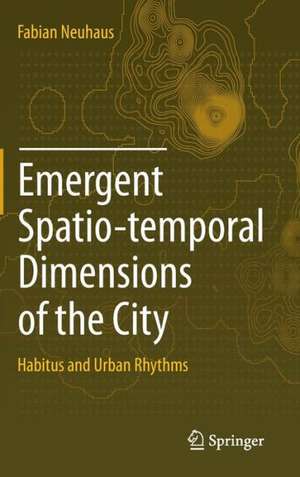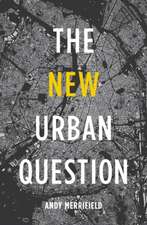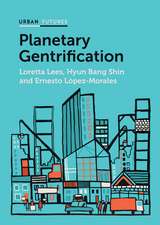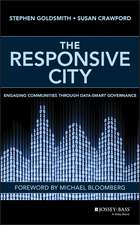Emergent Spatio-temporal Dimensions of the City: Habitus and Urban Rhythms
Autor Fabian Neuhausen Limba Engleză Hardback – 20 ian 2015
| Toate formatele și edițiile | Preț | Express |
|---|---|---|
| Paperback (1) | 564.46 lei 38-44 zile | |
| Springer International Publishing – 14 oct 2016 | 564.46 lei 38-44 zile | |
| Hardback (1) | 648.89 lei 6-8 săpt. | |
| Springer International Publishing – 20 ian 2015 | 648.89 lei 6-8 săpt. |
Preț: 648.89 lei
Preț vechi: 763.40 lei
-15% Nou
Puncte Express: 973
Preț estimativ în valută:
124.18€ • 128.29$ • 103.35£
124.18€ • 128.29$ • 103.35£
Carte tipărită la comandă
Livrare economică 26 martie-09 aprilie
Preluare comenzi: 021 569.72.76
Specificații
ISBN-13: 9783319098487
ISBN-10: 3319098489
Pagini: 300
Ilustrații: XL, 298 p. 121 illus., 80 illus. in color.
Dimensiuni: 155 x 235 x 20 mm
Greutate: 0.65 kg
Ediția:2015
Editura: Springer International Publishing
Colecția Springer
Locul publicării:Cham, Switzerland
ISBN-10: 3319098489
Pagini: 300
Ilustrații: XL, 298 p. 121 illus., 80 illus. in color.
Dimensiuni: 155 x 235 x 20 mm
Greutate: 0.65 kg
Ediția:2015
Editura: Springer International Publishing
Colecția Springer
Locul publicării:Cham, Switzerland
Public țintă
ResearchCuprins
Urban Rhythms.- Urban Machine and Time Space.- Body Space and Spatial Narrative.- Urban Diary.- New City Landscape.- Structuring Time.- Structuring Space.- Temporality - The Rhythmic City.
Textul de pe ultima copertă
This book focuses on the creation of space as an activity. The argument draws not only on aspects of movement in time, but also on a cultural and specifically social context influencing the creation of the spatial habitus. The book reconsiders existing theories of time and space in the field of urban planning and develops an updated account of spatial activity, experience and space-making. Recent developments in spatial practice, specifically related to new technologies, make this an important and timely task. Integrating spatial-temporal dynamics into the way we think about cities aids the implementation of sustainable forms of urban planning. The study is composed of two different case studies. One case is based on fieldwork tracking individual movement using GPS, the other case utilises data mined from Twitter. One of the key elements in the conclusion to this book is the definition of temporality as a status rather than a transition. It is argued that through repetitive practices as habitus, time has presence and agency in our everyday lives. This book is based on the work undertaken for a PhD at the Centre for Advanced Spatial Analysis and was and accepted as thesis by University College London in 2013.
Caracteristici
Revisits and learns from three important bodies of thought in urban planning: Rhythmanalysis, Lefebvre, 2004; The Image of the City, Kevin Lynch, 1960; What about People in Regional Science, Hägerstrand, 1970 Offers a new perspective on the role of time and individual activity in the urban context Provides unique city maps from around the world generated from Twitter data















